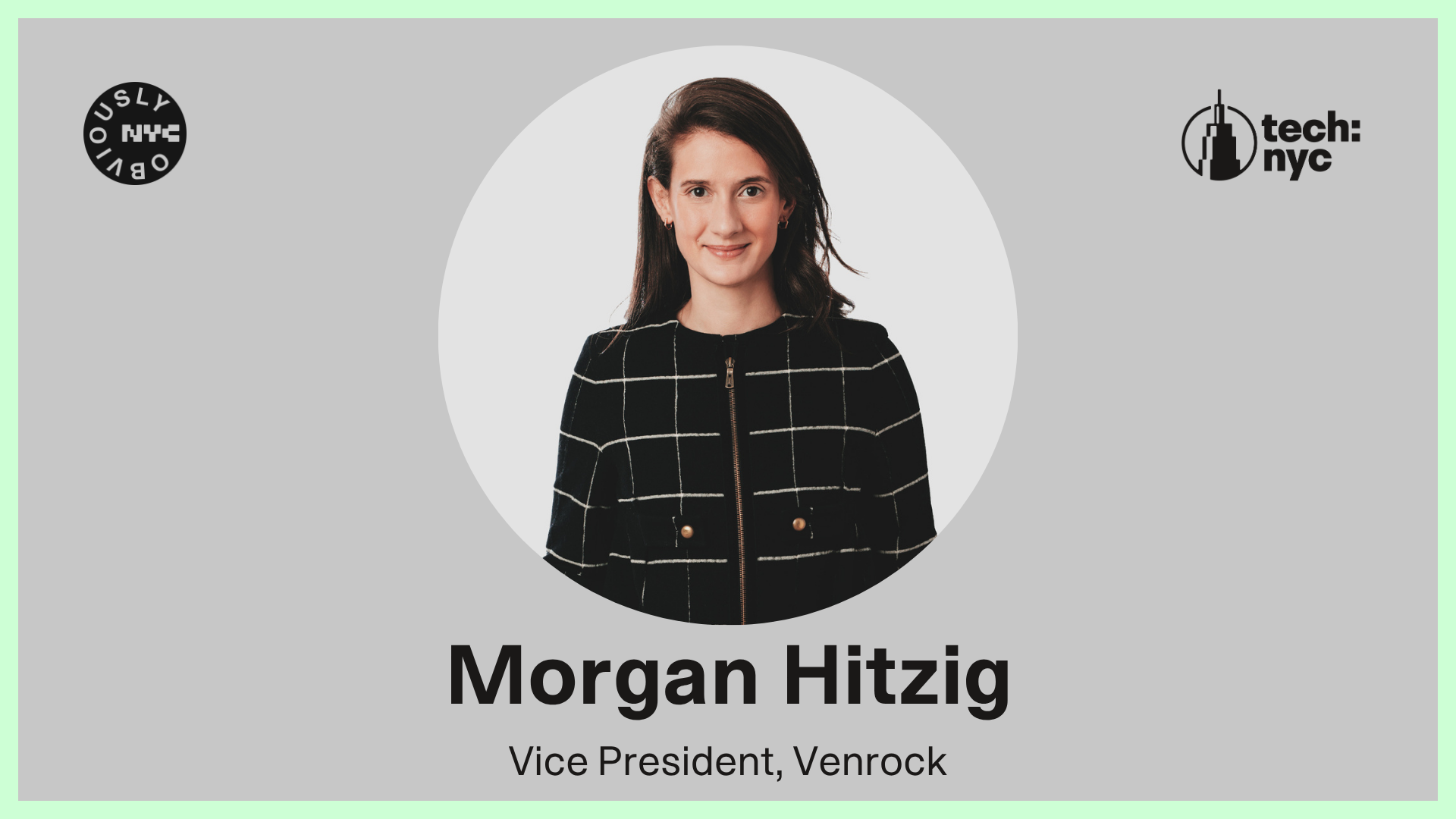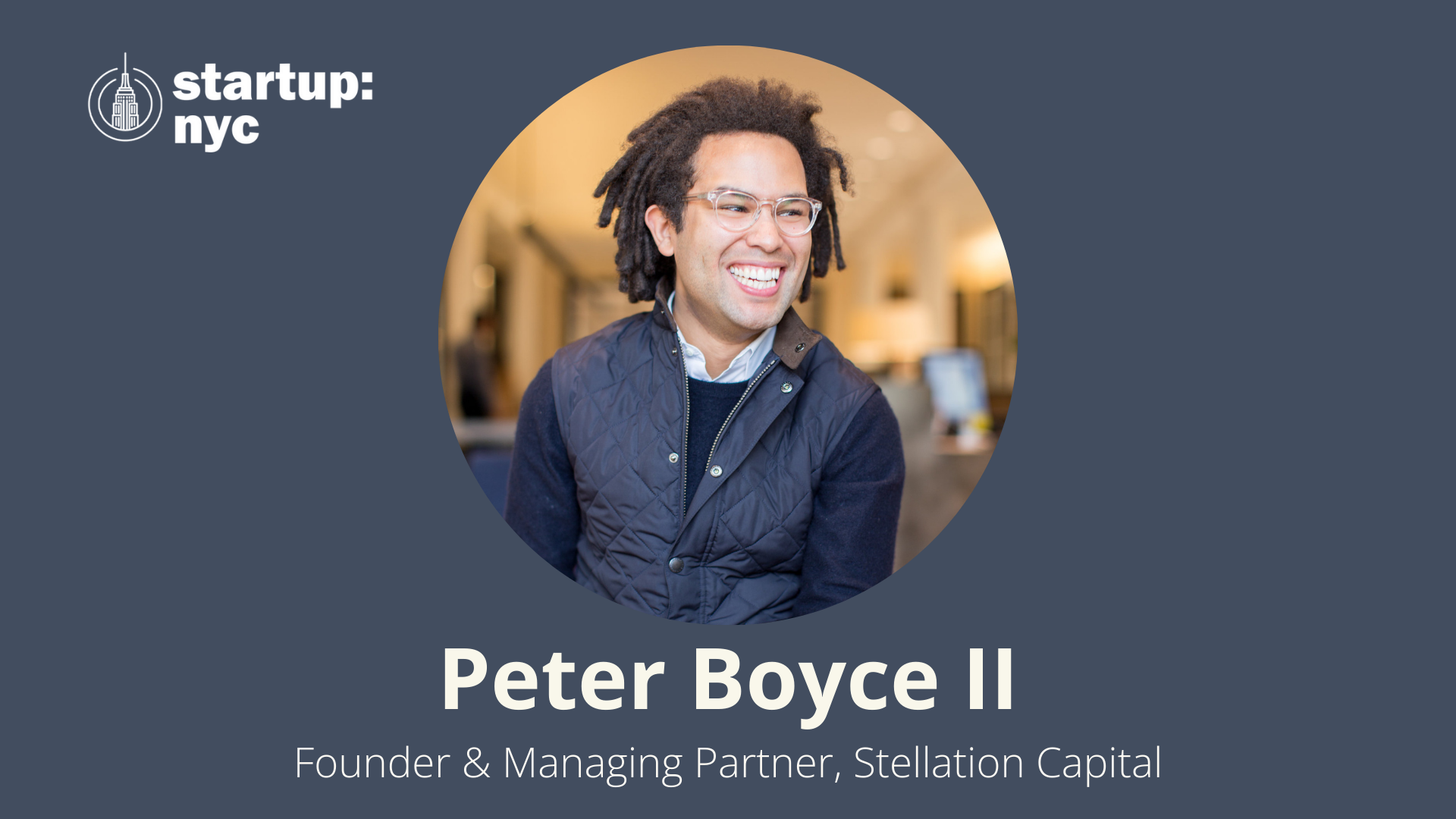VC Spotlight: Morgan Hitzig, Vice President, Venrock
When Morgan Hitzig, Vice President at Venrock, evaluates risk, it’s informed by more than term sheets and market reports. It’s shaped by years in the U.S. Navy Reserves, the NYPD Counterterrorism Bureau, and Special Operations before she ever stepped into Venrock.
In fact, as you’ll read below, Morgan didn’t envision becoming a VC. That all changed in 2023 after a breakfast meeting with Venrock’s Nick Beim, who laid out “how powerful the venture ecosystem can be when you build generational companies alongside founders you love and meaningfully shape policy.”
Morgan’s background gives her a unique perspective on investing in tech that touches national security or public safety. “Serving on both sides, public and private, forces you to think about risk and trust in more than just financial terms,” she says.
In honor of Veterans Day, we caught up with Morgan to discuss her career, the pace of adoption of new technologies by government agencies, and much more.
–
Where did your career start?
Morgan: I trace the roots of my career back to 9/11. I’m a native New Yorker so my memories from that day are so vivid. I was home sick from school, watching the events of that day from the second plane hitting without any adult filter in the room.
From that day on, I became a voracious reader of international news. I never wanted my future kids with questions about geopolitics that I could not answer. National security became the through-line of my career ever since: NYPD Counterterrorism to Navy intelligence to two startups focused on public safety and national security, and now to national-security investing. It all started with 9/11 and a simple goal: help make New York City the safest big city in America.
You joined Venrock in 2024 — what was the catalyst?
I never pictured venture capital as a stop on my path. In hindsight, you can stitch together a narrative but the simple truth is I wouldn’t be in this business without Nick Beim. We worked closely during my Dataminr days, and he showed me what venture can be at its best. He’s an exceptional investor and fellow geopolitics nerd who builds with a deeply people first mindset.
In 2023 he called and said, “I think you’d be really good at venture capital.” To which I glibly replied, “Isn’t venture a retirement job?” Pure naïveté on my part. Over breakfast he laid out how powerful the venture ecosystem can be when you build generational companies alongside founders you love and meaningfully shape policy. He was right. I’ve loved every minute since.
What stage do you invest at and what’s your average check size?
Predominantly Seed and Series A, with a big emphasis on incubations. About 60% of our biggest winners were incubated at Venrock. Average check size is $5-12M but it really depends on the founding team, the company and the opportunity.
You invest in technology companies that intersect extensively with the public sector — particularly national security, public safety, and critical infrastructure. How do you evaluate the potential of a startup whose product serves both commercial and public-sector markets?
I describe my focus at Venrock as investing in the public interest because so much of the defense tech conversation is really about the enablers: supply chain, advanced manufacturing, advanced materials, energy, microelectronics, etc. A core belief is that America’s best days are ahead if we build. Production is deterrence. Strong supply chains, modern factories, and mission-driven founders are the blueprint for a genuine American resurgence across the ossified industries that underpin a strong defense.
For dual use companies, sequencing matters. It’s hard to tackle commercial and government at once, so the entry point is critical. Earlier this year I invested in Adyton, a team that essentially climbed the front face of Mount Everest to work with the Department of War but they did it by design. Their founder DNA is U.S. Army Special Forces and they were maniacally focused on that customer set, fully aware of the large TAM outside defense, but recognizing the motions are different: sales archetypes, timelines, feature sets, government relations, contracting. Government is righteous work, but challenging. Often, commercial-first can derisk the rigmarole of selling into DoW.
You’re an Officer in the U.S. Navy Reserves, served as a senior analyst in the NYPD Counterterrorism Bureau, and have served overseas in support of Special Operations. How has that experience shaped your thinking about technology, risk, trust, and scaling in sectors like national security or public safety?
Serving on both sides, public and private, forces you to think about risk and trust in more than just financial terms. Risk in the defense domain is often characterized as risk to mission and risk to force. In the first decade of my career, I learned a whole host of different “languages”: journalism, law enforcement, military, startup operations, marketing, sales, and now venture. That range gives me a more balanced view of what’s at stake when technology touches national security or public safety.
As defense tech has heated up, I keep coming back to how deadly serious this work is. There’s a real pendulum risk for our ecosystem for all sides of the equation from founders to investors to government stakeholders. One failure mode: startups over promise and under deliver and DoD loses trust in non-traditional suppliers. The other? Government procurement stays broken (in spite of a strong push from DoW) resulting in great companies running out of runway and a loss of critical capability. Both outcomes are dangerous.
What’s your perspective on the pace of adoption of new technologies by government agencies and how founders should plan their go-to-market strategy accordingly? Government adoption is quicker than it was, but the most successful entrepreneurs in this space run on two tracks. The best GTM is a pincer strategy — two coordinated advances, bottoms up with operators and top-down with buyers, that meet in the middle to close on a decision and a budget.
On one flank, start bottom-up with operators at the point of friction in war. Validate the problem, build with their feedback in mind, and prove mission impact. DoW is rightly attuned to technology that serves Soldiers, Sailors, Airmen, Marines, and Guardians. Just remember that end users rarely control real dollars.
On the other flank, work top-down through Program Executive Officers and senior leaders. Map the acquisition path and budget lines, tell the story in metrics DoW cares about — readiness, cost, speed, reliability — and tie it to stated strategy.
This will evolve as Secretary Hegseth’s plan from last week takes hold. The combination of operator proof and senior sponsorship is what unlocks funding; for example, Adyton is focused on helping DoW pass an audit, which is the kind of outcome that moves money. If alignment plateaus, layer in government relations to close gaps between user demand and funding authority.
What’s the most common mistake you see founders make when pitching to investors? Picking the wrong investment partner. Full stop. The best pitches are two-way interviews. Make sure the investor actually understands your market, your buyer, and your time scale. This is doubly critical when it comes to defense. I’ve seen great companies set back by 18 months because they tried to chase traditional SaaS metrics. Defense tech runs on a different clock. If you are measuring these metrics, it can be destabilizing.
Relatedly, I meet many founders who assume every defense company should start with venture capital. In reality, plenty of technologies are critical to American advantage but may not produce venture-scale outcomes. Those companies are often better served by primes, debt, or non-dilutive funding. Forcing a venture model onto the wrong problem creates pain for everyone.
What’s an investment from the last 12 months you’re especially excited about?
Tough one since I love all the companies I choose to get involved with equally. I’m also newer to venture, so all three of my most recent investments landed in the last 12 months. Since I’ve already mentioned Adyton, I’ll brag on GenLogs.
GenLogs is run by three founders with deep government background and expertise. They are applying intel tradecraft from the Global War on Terror to track the $1T+ freight industry as it moves across the U.S. interstate system making freight flows queryable in near-real time. It’s a brilliant business with major positive externalities, including support to local law enforcement as well as real impact against human and narcotics trafficking.
We haven’t announced the third company yet so I’ll save that one for next time!
What are some of the top resources you recommend for founders starting out?
In the intelligence field, you’re not expected to know every answer. But you are expected to know how to find every answer. Adapt the intel mindset. Build a network that helps you find every answer you need to build your business. Investors can be helpful for this since they have the pattern matching across a wide variety of companies.
If you’re building in defense: Steve Blank’s PEO Directory is a living map of who buys what and how programs are structured: https://sites.google.com/lookleft.com/index/home
I always come back to a few re-readables: High Growth Handbook (Elad Gil) and The Hard Thing About Hard Things (Ben Horowitz).
You have a founder or LP in from out of town… where are you taking them? A New York Rangers game at MSG. My dad’s been a season ticket holder for 50+ years. The Blueshirts are in my blood.
Choose one: power breakfast, power lunch, or work dinner. Where?
Power breakfast somewhere close to the office in Bryant Park. Strong coffee is my only requirement.
And finally… what’s the best slice of pizza in NYC?
One of the great things about law enforcement is that cops know where to eat. I’ll go with an OG favorite from my NYPD Counterterrorism days: L&B Spumoni Gardens in Brooklyn. It’s a classic.












